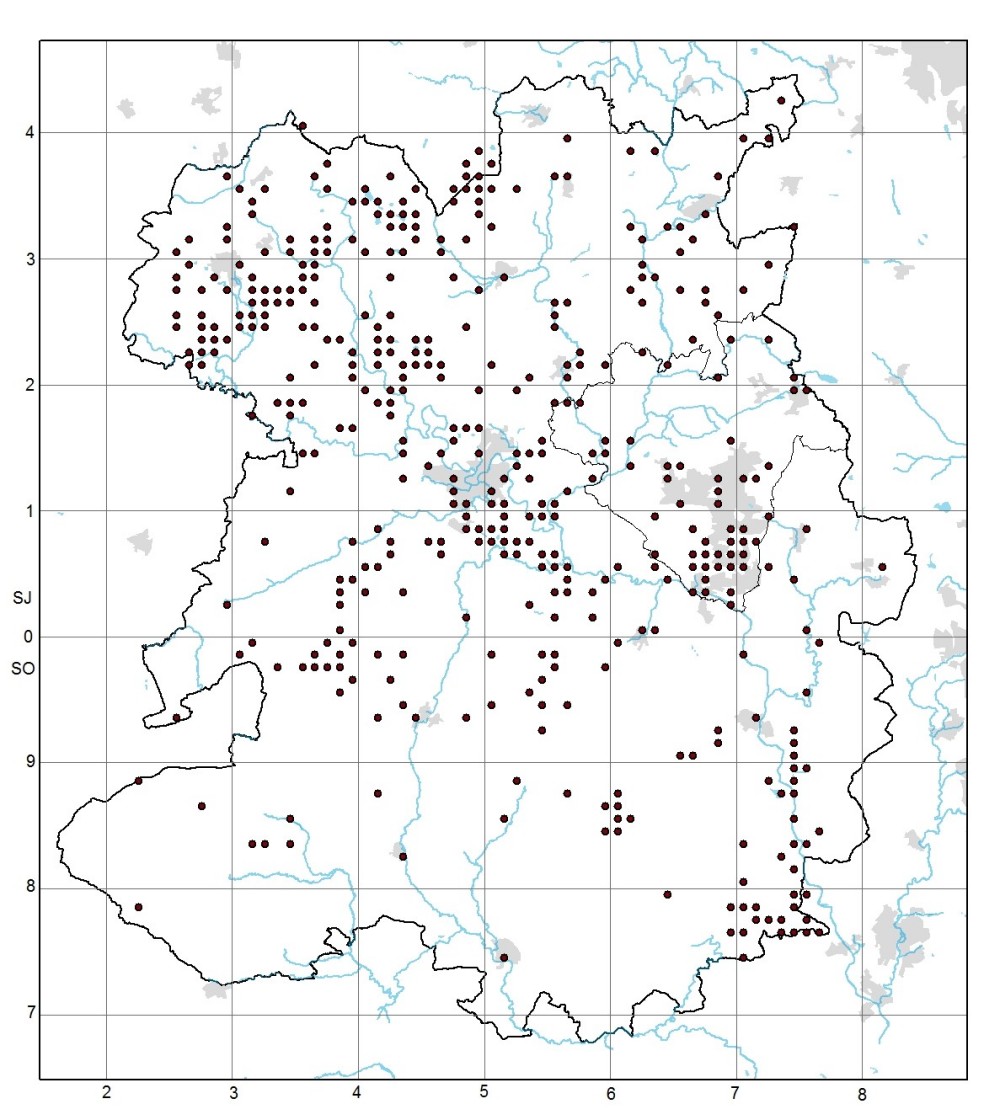Name
Aeshna grandis (Linnaeus, 1758)
Family:
Aeshnidae
Status in Britain and Ireland:
common and widespread in the lowlands; absent from northern and western Britain
Local Status:
common
Size:
Overall body length 70-77mm
Hindwing length 41-49mm
Flight period:
June to September
Photograph © D. Kitching
Male Brown Hawker
A large unmistakeable hawker with its brown body and brown wings. The brown abdomen has blue spots down the side and yellow marks on the dorsal face from segments 2-8. The brown thorax has no antehumeral stripes, but 2 broad yellow side stripes clearly visible in flight. At the wing bases are 4 blue spots and a further 2 on top of segment 2. The wings are large and suffused amber in colour with yellow pterostigma. The brown eyes have blue highlights and the legs are brown.
Similar Species
No similar species in Shropshire though beware of the Norfolk Hawker if you venture to Norfolk/ Suffolk/ Cambridgeshire.
Behaviour
Often seen well away from water hawking along hedgerows and woodland edges and can be seen flying well into the evening. The flight is quite distinctive with a tendancy to glide a lot in between bursts of active wing beats. Males will defend and patrol a territory though aggressive clashes with other males are not common. Copulation is a lengthy process and when completed the female oviposits alone inserting eggs into floating or emergent vegetation and semi submerged rotten logs.
Habitat
Found in a wide range of well vegetated standing or slow flowing waters such as ponds, lakes, canals, ditches and slow flowing rivers.
Shropshire Distribution
Early records date back to 1932 with sightings at Whixall Moss and Middleton (east of Oswestry). A handful of records were made throughout the 40’s-60’s before a notable increase in records during the 1970’s –many made at meres such as Cole Mere and canals namely the Shropshire Union, Shrewsbury, Coalport, Llangollen and Montgomery Canals. Butler (1982) and Lockton et al., (1996) both described this species as common and this is still very much the case today with Brown Hawker regularly attracting a good number of widespread annual records. Comparison with previous distribution maps reveals much infilling of unrecorded areas over time (presumably with increased recorder effort) though the range limits of the county distribution have changed little.
Where to see in Shropshire
Dudmaston, Attingham Park, Venus Pool, Whixall Moss, Wyre Forest, Cole Mere, Montogmery Canal, Granville Country Park and numerous other places!



